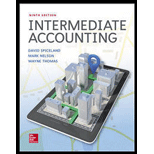
(1)
Condensed financial statement:
Condensed financial statements are statements which are prepared in addition to the traditional financial statement. It is viewed by the auditing team at the time of audit the condensed financial statements along with full financial statements for a full picture of the company’s financial status.
To Compare: The two firms greater earnings relative to resources available.
(1)
Explanation of Solution
Determine the
Rate of return on assets indicates the company’s overall profitability by excluding specific sources of finance.
Hence, Company M profitability exceeds the profitability of the Company R.
(2)
The two companies have achieved their respective rates of return on assets with similar combinations of profit margin and turnover.
(2)
Explanation of Solution
Profitability is achieved through a high profit margin or a high turnover or a combination of both.
Determine the rate of return on assets with combinations of profit margin and turnover:
Hence, Company R profit margin is less than that of Company M.
(3)
To Calculate: The rate of return on shareholders’ equity of two firms.
(3)
Explanation of Solution
Determine the rate of return on shareholders’ equity of two firms:
Rate of return on shareholders’ equity reveals the profit of the company generates with the money shareholders’ have invested.
Hence, Company R provides greater return to common shareholders than Company M.
(4)
To Calculate: The financial leverage (or) Equity multiplier of two firms.
(4)
Explanation of Solution
When the return on shareholders’ equity is greater than the return on assets, management is using debt funds to enhance the earnings for stockholders. Both firms do this. Company R has higher leverage than Company M which is used to provide a higher return to shareholders, even though its return on assets is less.
Determine the Equity multiplier of two firms:
Company R increased its return to shareholders 4.07 times (43.6% ÷ 10.7%) the return on assets. Company M increased its return to shareholders 2.34 times (34.6% ÷ 14.8%) the return on assets.
(5)
To identify: Of the two companies, which company appears riskier in terms of its ability to pay short-term obligations
(5)
Explanation of Solution
Determine the short term obligations of the two firms:
The current ratios of the two firms are comparable and within the range of the rule-of-thumb standard of 1 to 1. Acid-test ratio reveals that Company M is more liquid than Company R.
(6)
To identify: The efficient management of current assets.
(6)
Explanation of Solution
Receivables turnover ratio indicates how quickly a company is able to collect its
Inventory turnover ratio is used to determine the number of times inventory used or sold during the particular accounting period.
Determine the management of current assets through receivables turnover and inventory turnover of both the firms.
Company R receivables turnover is more rapid than Company M. Hence, its relative liquidity is not as bad as its acid-test ratio indicated.
(7)
To Identify: The creditor point of view, which company offers the most suitable margin of safety in terms of its ability to pay fixed interest charges?
(7)
Explanation of Solution
Times interest earned ratio quantifies the number of times the earnings before interest and taxes the business pay for the interest expense.
Determine the times interest earned ratio of both the firm:
Hence, Company M and Company R provides an adequate margin of safety in terms of its ability to pay fixed interest charges.
Want to see more full solutions like this?
Chapter 4 Solutions
INTERMEDIATE ACCOUNTING (LL) W/CONNECT
- General accountingarrow_forwardPlease explain the correct approach for solving this general accounting question.arrow_forwardRobin Corporation has ordinary income from operations of $30,000, net long-term capital gain of $10,000, and net short-term capital loss of $15,000. What is the taxable income for 2010? a) $25,000. b) $27,000. c) $28,500. d) $30,000. e) None of the above.arrow_forward
- Please explain the solution to this financial accounting problem using the correct financial principles.arrow_forwardI need the correct answer to this financial accounting problem using the standard accounting approach.arrow_forwardI am trying to find the accurate solution to this general accounting problem with the correct explanation.arrow_forward
- I need help with this financial accounting question using the proper financial approach.arrow_forwardCan you explain this financial accounting question using accurate calculation methods?arrow_forwardCan you help me solve this financial accounting question using valid financial accounting techniques?arrow_forward
- Please help me solve this financial accounting problem with the correct financial process.arrow_forwardPlease provide the solution to this financial accounting question with accurate financial calculations.arrow_forwardCan you solve this financial accounting problem using appropriate financial principles?arrow_forward

 AccountingAccountingISBN:9781337272094Author:WARREN, Carl S., Reeve, James M., Duchac, Jonathan E.Publisher:Cengage Learning,
AccountingAccountingISBN:9781337272094Author:WARREN, Carl S., Reeve, James M., Duchac, Jonathan E.Publisher:Cengage Learning, Accounting Information SystemsAccountingISBN:9781337619202Author:Hall, James A.Publisher:Cengage Learning,
Accounting Information SystemsAccountingISBN:9781337619202Author:Hall, James A.Publisher:Cengage Learning, Horngren's Cost Accounting: A Managerial Emphasis...AccountingISBN:9780134475585Author:Srikant M. Datar, Madhav V. RajanPublisher:PEARSON
Horngren's Cost Accounting: A Managerial Emphasis...AccountingISBN:9780134475585Author:Srikant M. Datar, Madhav V. RajanPublisher:PEARSON Intermediate AccountingAccountingISBN:9781259722660Author:J. David Spiceland, Mark W. Nelson, Wayne M ThomasPublisher:McGraw-Hill Education
Intermediate AccountingAccountingISBN:9781259722660Author:J. David Spiceland, Mark W. Nelson, Wayne M ThomasPublisher:McGraw-Hill Education Financial and Managerial AccountingAccountingISBN:9781259726705Author:John J Wild, Ken W. Shaw, Barbara Chiappetta Fundamental Accounting PrinciplesPublisher:McGraw-Hill Education
Financial and Managerial AccountingAccountingISBN:9781259726705Author:John J Wild, Ken W. Shaw, Barbara Chiappetta Fundamental Accounting PrinciplesPublisher:McGraw-Hill Education





